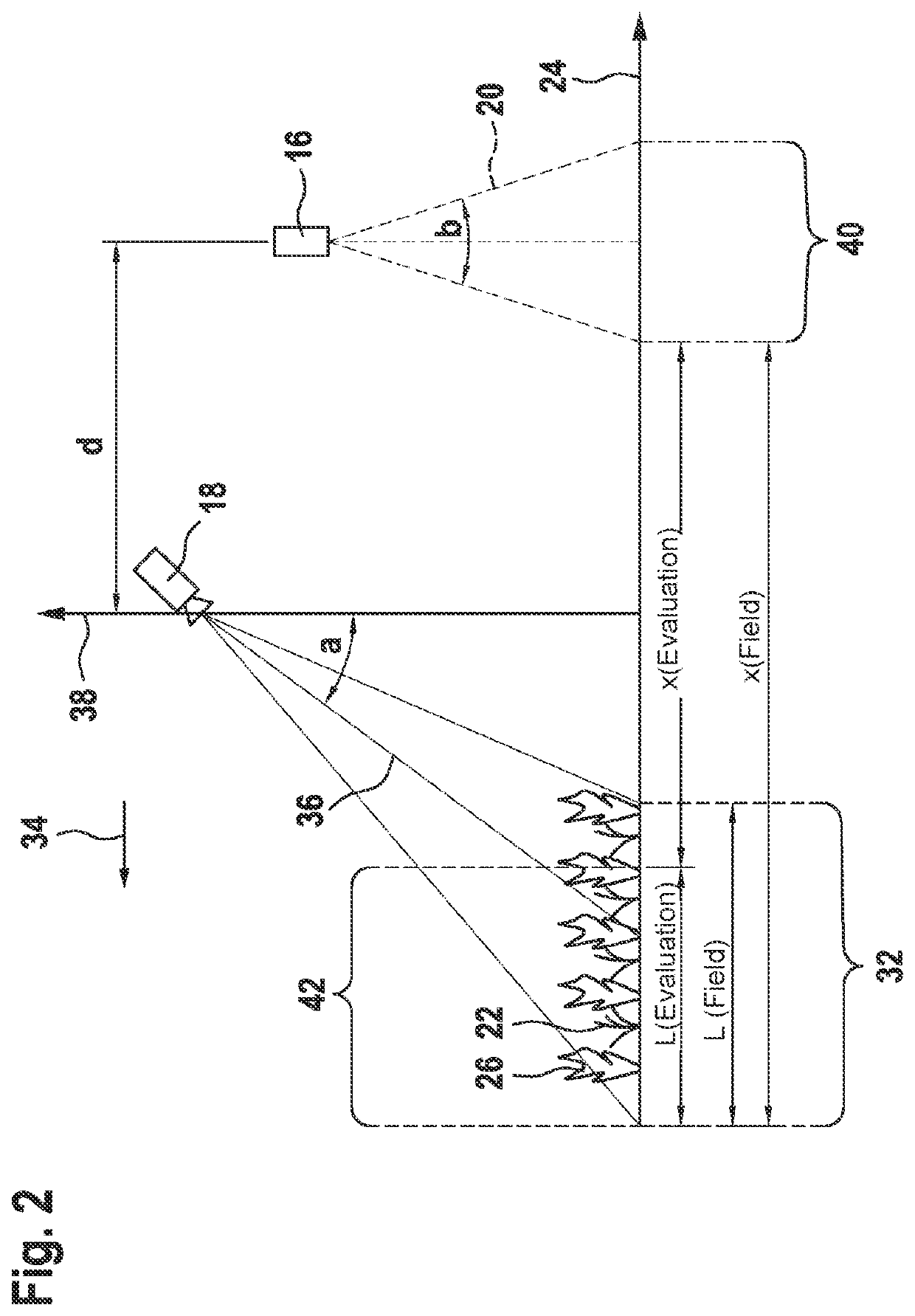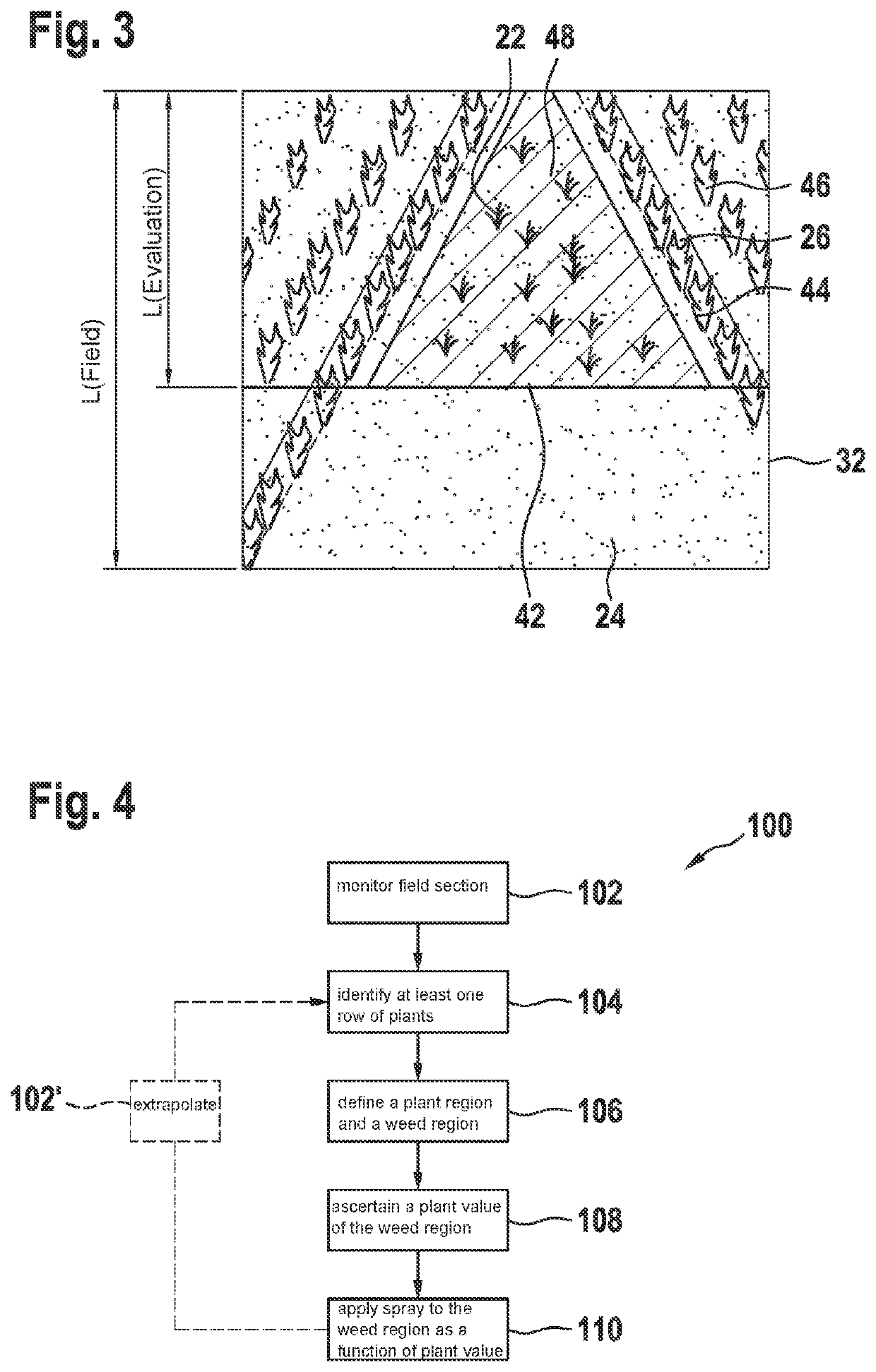Method for applying a spray to a field
a spray and field technology, applied in the field of spraying methods, can solve the problems of limited operating speed and system inability to carry out location-correct spraying, and achieve the effect of increasing maximum traveling and/or operating speed, reducing the amount of processing time, and being highly simpl
- Summary
- Abstract
- Description
- Claims
- Application Information
AI Technical Summary
Benefits of technology
Problems solved by technology
Method used
Image
Examples
Embodiment Construction
[0050]In the description below of preferred exemplary embodiments of the present invention, the same or similar reference numerals are used for the elements that are shown in the different figures and function similarly, in which case a repeated description of these elements is omitted.
[0051]A schematic representation of an agricultural spraying device, the entirety of which is denoted by reference numeral 10, is shown in FIG. 1.
[0052]Agricultural spraying device 10 takes the form of a field sprayer 10. Field sprayer 10 is positioned on a mobile land vehicle 12, which takes the form of a towing vehicle 12 or tractor 12.
[0053]Agricultural spraying device 10 includes a spray boom 14. Spray nozzles 16 and optical detection units 18 are situated on spray boom 14. Spray nozzles 14 are designed to apply a spray 20 to weeds 22 of an agricultural plot. Optical detection units 18 take the form of optical cameras 18. Optical cameras 18 each include a filtering unit for extracting a color port...
PUM
 Login to View More
Login to View More Abstract
Description
Claims
Application Information
 Login to View More
Login to View More - R&D
- Intellectual Property
- Life Sciences
- Materials
- Tech Scout
- Unparalleled Data Quality
- Higher Quality Content
- 60% Fewer Hallucinations
Browse by: Latest US Patents, China's latest patents, Technical Efficacy Thesaurus, Application Domain, Technology Topic, Popular Technical Reports.
© 2025 PatSnap. All rights reserved.Legal|Privacy policy|Modern Slavery Act Transparency Statement|Sitemap|About US| Contact US: help@patsnap.com



